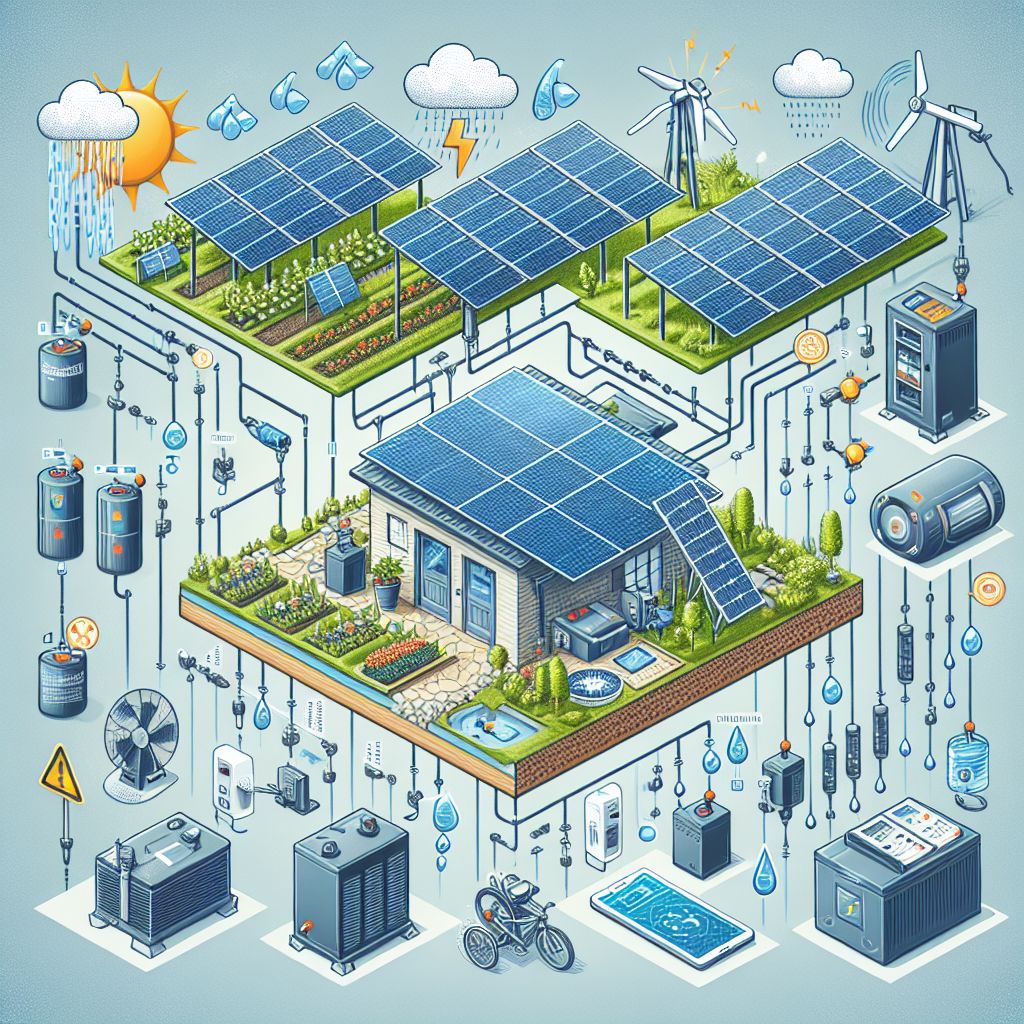
Picture a farm where the sun does more than just feed the crops, it also fuels the system that hydrates them. This is the potential of solar irrigation, a potential that brings with it the necessity for dependability through backup power systems. As we explore the realm of solar irrigation backup power, let’s arm ourselves with the information needed to keep our farms operating seamlessly, regardless of the weather.
Key Points
For consistent operation, solar irrigation systems need backup power, particularly during cloudy days or nighttime.
Battery banks, charge controllers, and inverters are essential elements of a solar irrigation backup system.
There are several backup options to choose from, such as lithium-ion and lead-acid batteries, hybrid systems, and generators.
Properly evaluating energy needs and carefully selecting battery size and backup power sources are critical steps in setting up a backup system.
Regular maintenance and management of the backup system are key to optimal performance and longevity.
Enabling Farms with Sunlight
Modern agriculture’s lifeblood isn’t just water and nutrients; it’s also about how we manage our resources. Solar power has emerged as a game-changer, offering an environmentally friendly and cost-effective way to keep our crops flourishing. But, like all technology, it requires a strong plan to ensure it doesn’t fail when we need it most.
The Role of Solar Energy in Contemporary Farming
Solar irrigation systems use the power of the sun to pump water, making them perfect for farming in remote areas or places without access to the power grid. They are environmentally friendly and reduce dependence on fossil fuels. However, their weakness is that they rely on sunlight, which isn’t always available.
Backup power is not just a luxury; it’s a necessity for any farmer who wants to avoid the risk of a dry spell caused by a cloudy day. Therefore, it is crucial to integrate a backup system to ensure a steady flow of water to your crops, regardless of the weather conditions.
Creative Ways to Maintain Uninterrupted Water Supply
There is no one-size-fits-all solution when it comes to backup power for solar irrigation. It has to be customized to meet the unique needs of your farm, taking into account factors such as the climate, water needs, and the size of the solar setup. With the right system in place, you can be confident that your crops will get the water they need without any disruptions.
The Importance of a Backup Power System for Farms
When it comes to farming, consistency is everything. Crops don’t have the luxury of waiting for the sun to shine, and livestock can’t postpone their need for water. A backup power system guarantees that your irrigation pump continues to function during the night and when the sun isn’t as strong, providing the constant water supply that is vital for a successful farm.
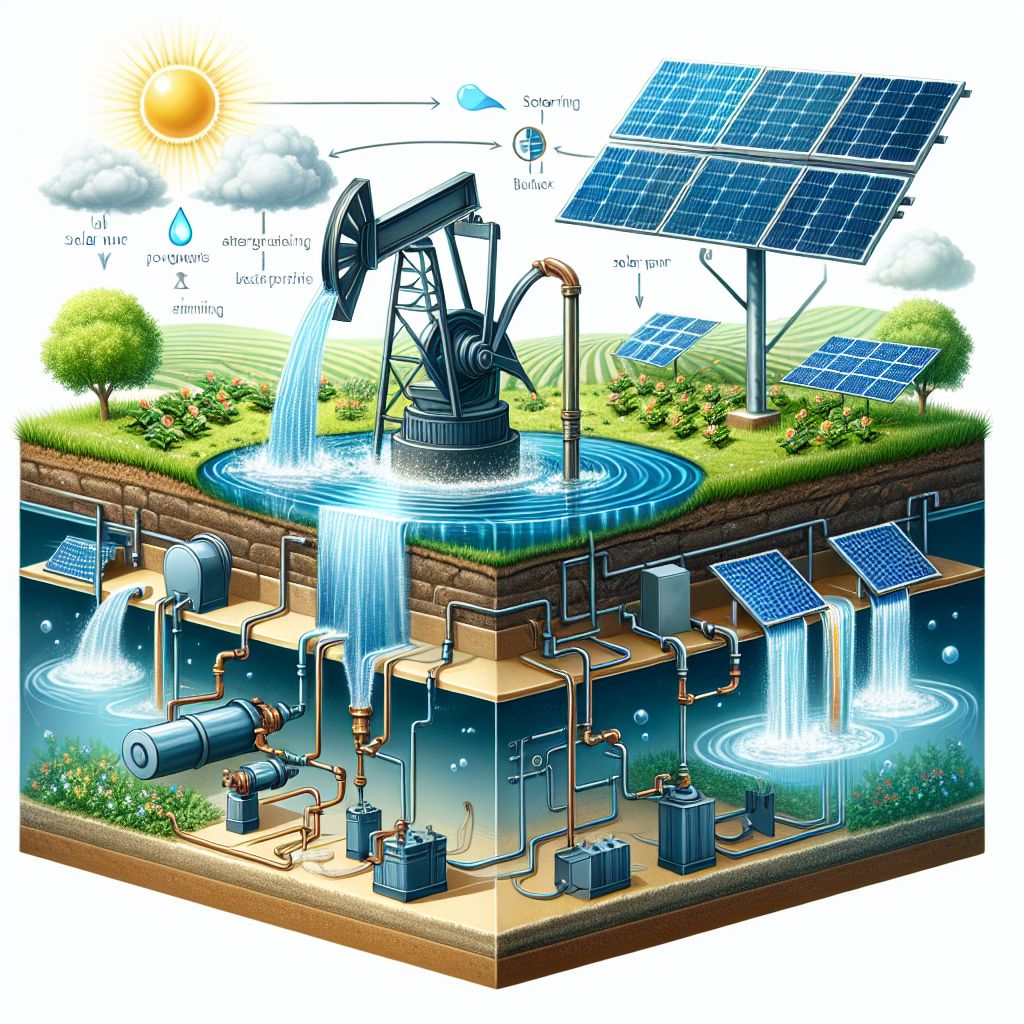
Getting to Know Solar Irrigation Backup Systems
The core of a solar irrigation system is the solar-powered water pump, which gets its energy straight from solar panels. However, the system requires another energy source when the sun is not out. This is where a backup system is useful, as it stores extra solar energy or offers an alternative power source when there is no solar energy.
How Solar-Powered Water Pumps Work
Solar-powered water pumps use photovoltaic (PV) panels to turn sunlight into electricity. This electricity then powers a motor that pumps water from a source, such as a well or river, to the location where it’s needed. Simple but powerful, these systems have the potential to revolutionize farming, particularly in areas without access to the electrical grid.
Understanding the Functioning of Backup Power Systems in Solar Pumps
Think of a backup power system as a solar pump’s insurance policy. It guarantees that you have a dependable power supply to keep the water moving even when the skies are overcast or it’s nighttime. Usually, these systems include batteries that accumulate excess solar power during times of sunshine, which can be utilized when the solar panels are not generating power.

Essential Elements of Backup Power
Backup power for solar irrigation systems is like a reliable companion – always there when you need it. To guarantee this dependability, there are several essential elements that we need to comprehend.
Battery Banks: Your Power Stash
Battery banks act like giant power containers. They store electricity generated by your solar panels during the day when they’re absorbing sunlight. When the sun goes down, or when it’s cloudy, the stored energy powers your irrigation system.
Charge Controllers: The Unsung Heroes
Charge controllers are the gatekeepers of your backup power system. They manage the flow of electricity into the batteries, ensuring they’re charged correctly and protected from being overcharged or drained too low. This careful balance helps extend the life of your batteries.
Inverters: Turning Sunlight Into Usable Energy
Inverters are the workhorses that transform the DC power stored in your batteries into AC power that can power your pumps. They’re essential because most irrigation systems are built to run on AC power, the same kind of power you get from the grid.
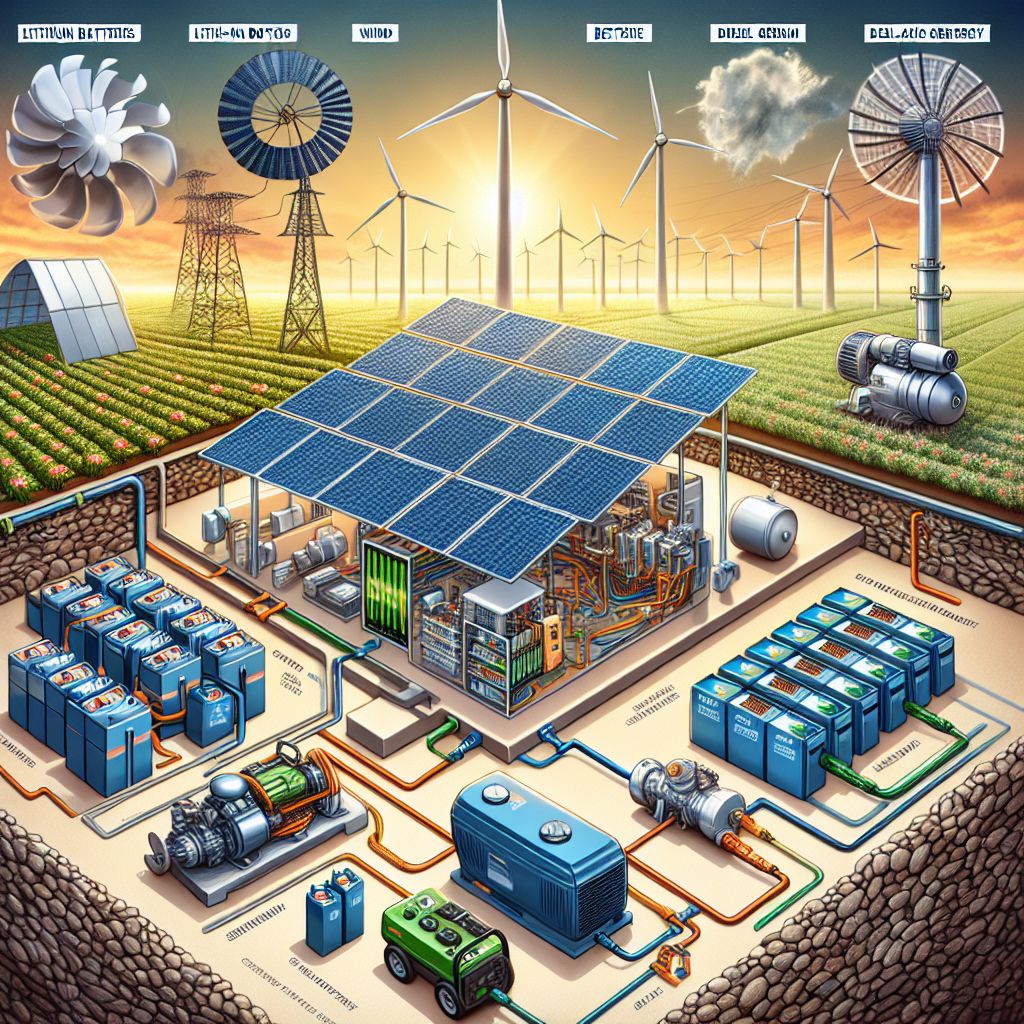
The Best Backup Power Choices for Your Solar Pump
Now, let’s take a look at the different backup power choices that can keep your irrigation system running 24/7.
Lithium-Ion Batteries: Small but Mighty
Lithium-ion batteries are the go-to option for many solar systems due to their high energy density, allowing them to pack a lot of power into a small space. They also last longer and require less upkeep than other battery types.
Lead-Acid Batteries: Tried and True
Lead-acid batteries have been in use for a long time, and they are frequently used in off-grid solar systems due to their dependability and lower initial cost. They do require more upkeep and have a shorter lifespan than lithium-ion batteries, but they are a well-established technology that many farmers rely on.
Combined Solar and Wind Power: A Hybrid System
Some farmers opt for a hybrid system that combines solar power with another renewable source such as wind. This can be particularly beneficial in regions where the wind can compensate when the sun is not shining, thus supplying a continuous energy source to your irrigation system.
Generators: The Tried-and-True Solution
Generators, a conventional backup choice, can operate on diesel or gasoline. Although they are not as green as solar or wind power, they can provide a dependable source of energy when other alternatives are not available or practical.
Hybrid Solutions: The Best of Both Worlds
If your farm is near the grid, a hybrid system may be the best choice. You can use solar power as your primary energy source, but if you need more power than your system can generate, you can use the grid as a backup.
This below table will discuss the best backup power choices for a solar irrigation system, including the advantages and disadvantages of each option.
|
Backup Power Option |
Advantages |
Disadvantages |
|---|---|---|
|
Battery Backup | – Provides power during periods of low sunlight or at night. 2, 4 | – Requires additional investment in batteries and charge controller. 2, 4 |
|
Generator Backup | – Can provide large amounts of power to run the pump and other household loads. 2 | – Requires fuel (gasoline, diesel, or propane) which adds ongoing operating costs. 2 |
|
Hybrid System (Solar + Generator) | – Combines the benefits of solar power and generator backup. 2 | – More complex system with additional components and wiring. 2 |
|
Grid-Tied System with Backup | – Can use the utility grid as a backup power source when solar power is insufficient. 4 | – Requires interconnection with the utility grid, which may have additional costs and regulations. 4 |
The choice of the best backup power option for a solar pump will depend on factors such as the size of the pump, the local climate and weather patterns, the availability and cost of different energy sources, and the user’s specific needs and preferences. A careful analysis of the system requirements and the tradeoffs between the different options is recommended to determine the most suitable backup power solution.
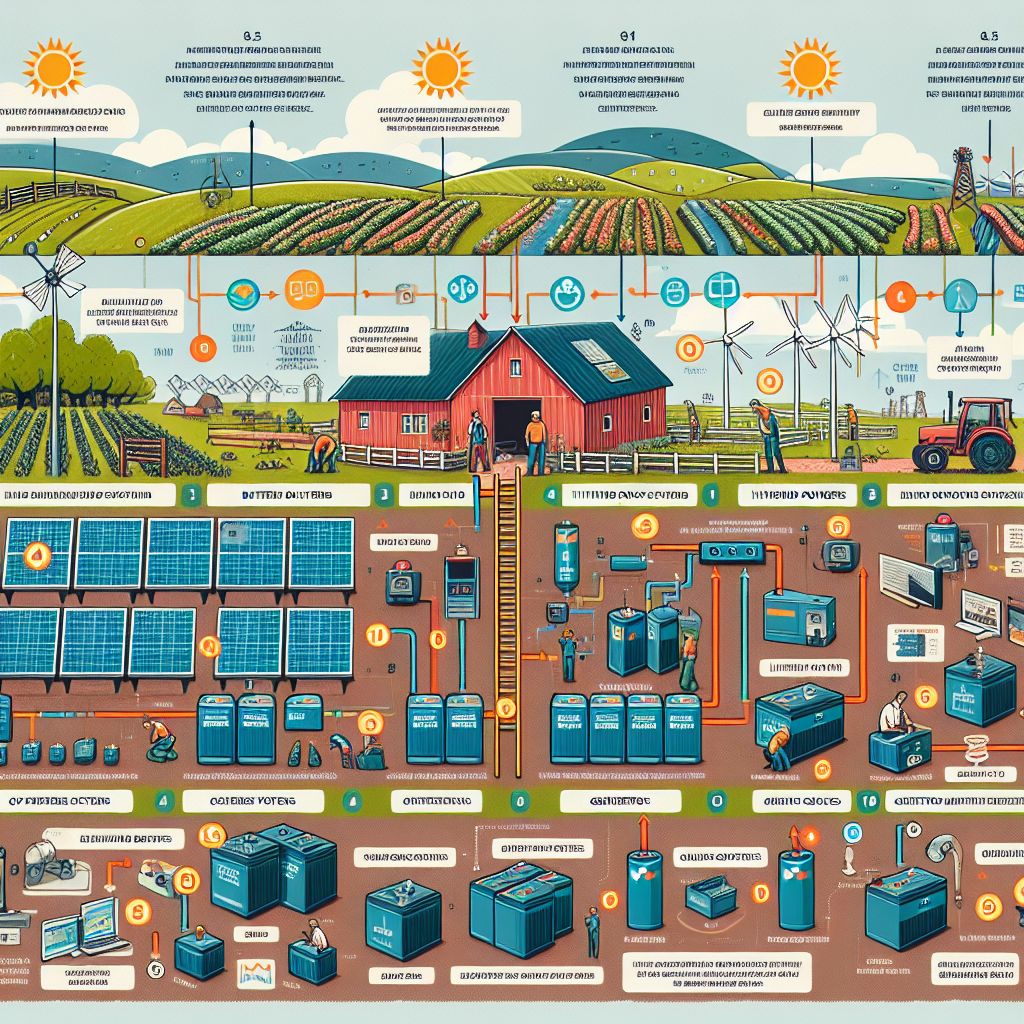
Setting Up Your Backup Power System
Setting up a backup power system is similar to installing a security system for your farm. You need to plan carefully and consider your specific needs.
Step 1: Assessing Your Energy Requirements
Firstly, examine your farm’s energy consumption. What is the power requirement of your irrigation system? How much sunlight does your location receive annually? Answering these questions will enable you to determine the amount of backup power needed to ensure your crops are adequately watered and your farm operations are uninterrupted.
Step 2: Selecting the Appropriate Battery Size
Next, you need to decide on the size of your battery bank. This will be determined by the size of your solar panel system and the amount of power you need to store. You should have enough capacity to last through the night or a cloudy day without running out.
Step 3: Choosing Your Backup Power Source
Next, you need to choose the backup power source that best suits your farm. Remember the options we talked about before, such as lithium-ion or lead-acid batteries, hybrid systems, or even a generator. Consider what matters most to you – is it dependability, price, environmental footprint, or perhaps a mix of these elements?
Step 4: Putting the System Together and Checking Safety
Now that everything is ready, it’s time to put your backup power system in place. This is a critical step that should be done by experts who can make sure everything is set up safely and properly. They’ll also carry out safety checks to ensure your system is good to go.
Step 5: Regular Upkeep and Supervision
Lastly, remember to maintain your system. Like any other piece of farming machinery, your backup power system requires routine inspections to remain in optimal condition. Monitor your batteries, clean your solar panels, and ensure your charge controllers and inverters are working correctly.
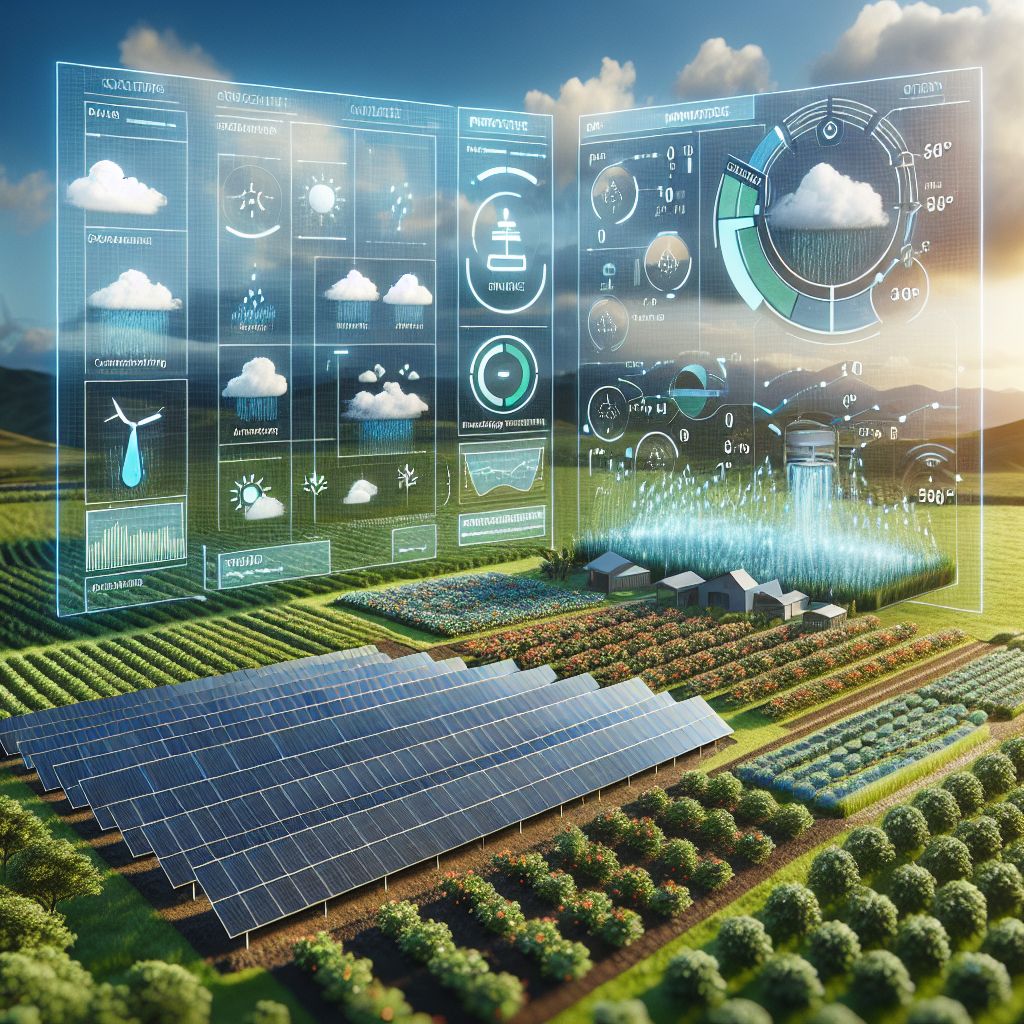
Making the Most of Your Solar Irrigation System
Maximizing your solar irrigation system’s potential requires you to adapt to the fluctuating environment. The water requirements of your crops vary with the changing seasons. This is where intelligent technology becomes useful, allowing you to modify your irrigation timetable based on up-to-the-minute data. This not only saves water, but also guarantees that your plants receive exactly what they need, exactly when they need it.
Maximizing Water Efficiency with Intelligent Tech
Intelligent irrigation controllers are revolutionizing the way we manage water. They utilize weather predictions, soil dampness detectors, and evapotranspiration data to automatically modify watering schedules. This results in less waste, reduced water costs, and healthier plants. By adopting these technologies, you’re positioning yourself at the cutting edge of eco-friendly farming.
Keeping an Eye on System Performance and Energy Usage
It’s important to stay on top of how your system is performing and how much energy it’s using. This can help you spot any potential problems or inefficiencies before they get out of hand. There are tools available that can monitor everything from how much charge your batteries have to how fast your pump is pumping water. This can give you a full picture of how well your system is working and can help you make the best decisions.
Adjusting to Weather and Seasonal Changes
A good farm is one that can adapt. Solar irrigation systems should be versatile and capable of adjusting to different weather and seasonal demands. By using weather prediction models and historical data, you can prepare for changes and adjust your backup power needs accordingly. This way, your crops will not be affected by the unpredictability of nature.
Ensuring Continuous Operation Through Challenges
Having a reliable irrigation system is crucial for any farm. It ensures that crops receive the necessary water for growth and productivity. However, power outages can disrupt the continuous operation of your irrigation system, causing potential harm to your crops. To prevent this from happening, it is essential to have a backup plan in place.
Backup System Testing: Preparing for the Unexpected
The first step in ensuring the continuous operation of your irrigation system during power outages is to have a backup system in place. This backup system can be a generator or a battery-powered backup pump. However, having a backup system is not enough; it is crucial to regularly test and maintain it to ensure it will function when needed.
Schedule regular maintenance checks for your backup system to ensure that it is in good working condition. Test it periodically to make sure it can handle the load of your irrigation system. It is also essential to have spare parts for your backup system, as they might need to be replaced over time.
Weatherproofing: Guarding Against the Elements
Apart from power outages, extreme weather conditions can also affect the operation of your irrigation system. Heavy rain, lightning, and strong winds can damage your irrigation system and lead to system downtime. To prevent this, it is essential to weatherproof your system.
Install surge protectors to prevent damage from lightning strikes. Use weatherproof enclosures to protect your irrigation system’s control panel and other electrical components. Make sure all connections and cables are waterproof and properly insulated. It is also a good idea to have a backup power source specifically for your irrigation system, such as a solar-powered system.
Emergency Response: Acting When System Downtime Strikes
Despite all the precautions, there may be instances when your irrigation system experiences downtime due to power outages. In such cases, it is crucial to have an emergency response plan in place to minimize the impact on your crops.
First, identify the cause of the power outage and assess the damage to your irrigation system. If the issue can be resolved quickly, do so. If not, switch to your backup system and make any necessary adjustments to ensure it is functioning correctly.
In this below table, we will discuss some ways to ensure the continuous operation of your irrigation system on a farm through power outages.
|
Topic |
Key Considerations |
|---|---|
|
Backup System Testing | – Regularly test backup power sources (e.g. generators, batteries) to ensure they are functioning properly. 3, 4 |
|
Weatherproofing |
– Protect electrical components and connections from moisture, wind, and other environmental factors. 1, 2, 3 |
|
Emergency Response |
– Establish clear protocols for responding to system failures or power outages. 1, 3, 4 |
Ensuring the continuous operation of your irrigation system on a farm through power outages requires proper planning and preparation. Regularly test and maintain your backup system, weatherproof your irrigation system, and have an emergency response plan in place. By taking these measures, you can minimize the impact of power outages on your crops and ensure their continuous growth and productivity.
Wrapping Up:
Ultimately, solar irrigation systems that include a dependable backup power source are a sustainable and resilient solution for today’s farming. By understanding the parts, considering the options, and applying clever strategies, you can ensure your farm stays productive and your crops thrive, no matter the weather. The sun may not shine every day, but with a strong backup system, the future of your farm certainly will.
Common Questions and Answers (Q&A)
Before we end our conversation about solar irrigation backup systems, we should answer a few questions you might still have.
What Advantages Do Solar Irrigation Systems Offer to Farmers?
Solar irrigation systems provide numerous advantages to farmers, such as lower energy costs, less dependence on non-renewable resources, and a smaller carbon footprint. They also allow farmers to water their fields in remote areas where grid power is either not available or not reliable.
Do Solar Backup Systems Work at Night?
Indeed, solar backup systems are built to save any surplus power they produce during daylight hours. That way, they can use it at night or when it’s cloudy. This guarantees your irrigation system will always have power, no matter what time it is.
How Long Do Solar Batteries Usually Last?
Depending on the type and quality, the lifespan of solar batteries can vary. Lithium-ion batteries have a lifespan of 5 to 15 years, while lead-acid batteries usually last for 3 to 5 years. If maintained properly, their lifespan can be extended.
Do Solar Backup Systems Support the Environment?
Solar backup systems certainly support the environment as they utilize the sun’s renewable energy, which decreases the reliance on fossil fuels. They also do not release any greenhouse gases while they are running, which helps to keep the environment clean and healthy.
What is the Frequency of Maintenance for Backup Power Systems?
Backup power systems need routine maintenance to keep them functioning properly. This involves monitoring battery levels, cleaning solar panels, and making sure all connections are tight. It is typically suggested to do maintenance checks at least biannually, but some parts may require more regular care.
Solar Irrigation Backup Power: Reliable Farming Solutions & Continuous Operation Systems ensure that farmers can maintain irrigation and protect their crops during power outages. Understanding the importance of backup power for solar pumps is essential for sustainable agriculture.







Leave a Reply